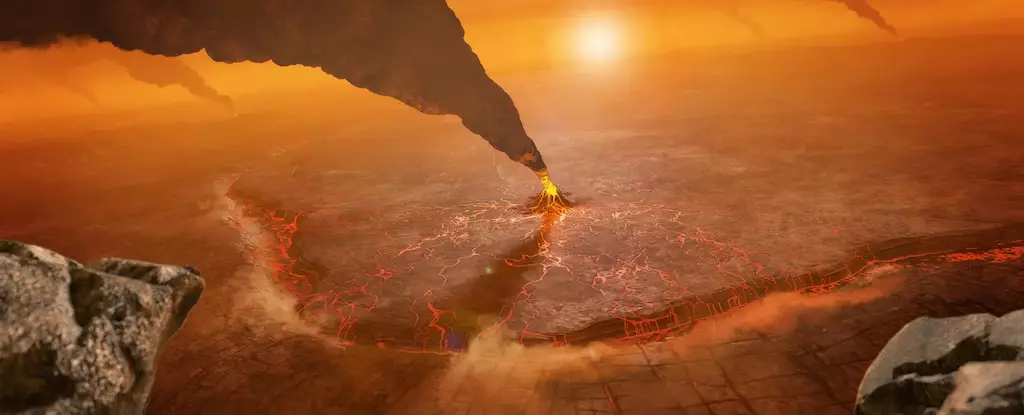Recent revelations about Venus are challenging our preconceived notions of this enigmatic planet, shedding light on its geological complexity and igniting curiosity in planetary science. While Venus is often deemed a hellish counterpart to Earth, new research indicates it may possess dynamic geological activities reminiscent of our own planet. A re-examination of data collected from NASA’s Magellan probe has unveiled that Venus is experiencing tectonic-like processes that are not only deforming its surface but also suggest a potential for recycling its crust. Such findings signify that Venus may not be a stagnant world after all, but rather a vibrant, evolving environment that bears striking resemblances to early Earth.
Understanding Coronae: The Keys to Venusian Geology
At the forefront of this research are the enormous and unique geological formations known as coronae. These features are raised, circular structures that give off a crown-like appearance—hence their name. Initially mistaken for impact craters, further analysis has revealed that coronae are indeed volcanic in nature. They are formed by hot, molten plumes that rise through the planetary crust, pushing the surface upward into a dome shape before eventually collapsing. This cycle of elevation and subsidence could represent a form of internal geological activity, comparable to the processes occurring here on Earth under tectonic plates.
Understanding the formation of coronae is crucial, as these colossal structures provide valuable insight into Venus’s interior dynamics. According to Gael Cascioli, a planetary scientist affiliated with NASA and the University of Maryland, these formations allow scientists to theorize about potential subsurface activities that could resemble tectonic interactions. By utilizing data regarding gravity and surface topography from the Magellan mission, researchers have identified 75 distinct coronae, leading to groundbreaking implications about the geological activity beneath Venus’s inhospitable exterior.
Geological Analogs: Subduction and Lithospheric Dripping
The research posits that, while Venus lacks the classic tectonic plates that define Earth’s geology, there may be analogous interactions at work between these mantle plumes and the lithosphere. For instance, two notable geological processes on Earth could also exist on Venus: subduction and lithospheric dripping.
Subduction involves one tectonic plate getting forced beneath another, a process essential for heat dispersion on our planet. On Venus, a somewhat altered version may occur, where ascending plumes push surface materials outward, leading to collisions that force some material downward into the mantle. This reworking of the crust suggests a more active geological scene than previously assumed.
Lithospheric dripping presents another captivating process. The Earth’s lithosphere can become heated and begin to melt from below, leading to the formation of “drips” that eventually detach and sink, regardless of their cooler density compared to the surrounding fluids. This melting dynamic may be mirrored on Venus, hinting at a complex interplay between the planet’s crust and its molten interior.
Barriers to Exploration and Future Investigations
Despite the thrilling potential these findings conjure, the exploration of Venus remains fraught with challenges that hinder our understanding of its geological activity. The planet’s scorching surface temperatures, extreme atmospheric pressure, and notoriously corrosive environment complicate our attempts to study it directly. Hence, remote sensing and analysis of existing data become paramount for piecing together the geological puzzle of Venus.
The study of coronae presents a logical focal point for future research missions to Venus. Their abundance and enormous scale make them prime candidates for exploration, potentially revealing secrets not only about Venus but also about planetary evolution as a whole. Anna Gülcher from the University of Bern emphasizes that engaging with these features can hopefully uncover ongoing processes that guide their formation and consequently reshape our understanding of how similar dynamics might have influenced the evolution of Earth.
Implications for Broader Planetary Science
The implications of these discoveries extend beyond Venus itself. The recognition that such geological activity can exist on a planet without a tectonic system prompts scientists to reconsider our understanding of planetary formation and evolution.
Such tectonic-like processes may not be exclusive to Venus but could potentially be observed on other celestial bodies within our solar system and beyond. This newfound understanding encourages a reevaluation of conditions that foster geological dynamism on various planets.
The findings suggest an exciting avenue for future missions and collaborative efforts in planetary science. As we continue to peer into the depths of the universe, the mysteries of Venus could help illuminate the broader narrative of planetary dynamics, and perhaps lead to a deeper comprehension of our own Earth’s past and future.


Leave a Reply